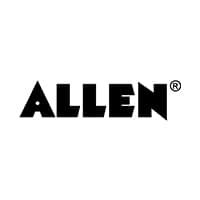NEET/JEE Coaching Scholarship
Get up to 90% Scholarship on Offline NEET/JEE coaching from top Institutes
ICSE 10th exams are organized by the Council for the Indian School Certificate Examination (CISCE). ICSE stands for Indian Certificate of Secondary Education, which is equivalent to Class 10. The application process for ICSE 10th exams is held through respective schools.
More About ICSE Board Exams Class 10 2025:
| Full Exam Name | Indian Certificate of Secondary Education 10th Examination |
| Short Exam Name | ICSE 10th |
| Conducting Body | Council For The Indian School Certificate Examinations |
| Frequency Of Conduct | Once a year |
| Exam Level | Matriculate |
| Languages | Assamese +11 more |
| Mode Of Application | offline +1 more |
| Mode Of Exam | offline |
| Exam Duration | 3 Hours |
ICSE 10th Indian Certificate of Secondary Education 10th Examination (session 2025)
Read More
To appear for ICSE board exams 2025, students have to satisfy the following eligibility criteria:

After completing 10th grade, students have a wide range of course options to choose from. This eBook provides comprehensive details about the various courses available after 10th.
Download NowSubject-wise 10th ICSE board Exam Pattern
| Subject | Total marks |
| Group I - 4 Compulsory Subjects | |
| English Language | 80 marks for each paper |
| History, Civics | 80 Marks |
| Geography | 80 Marks |
| Second language | 80 Marks (40 Marks for section A and 40 marks for section B) |
| Group II- includes 2 Optional subjects | |
| Science (Physics, Chemistry, Biology) | 80 marks for each paper |
| Environmental Science | 80 marks |
| Mathematics | 80 marks |
| Commercial Studies | 80 marks |
| Economics | 80 marks |
| Classical Language | 80 marks |
| Modern Foreign Language | 80 marks |
| Group III- includes 1 optional subject | |
| Commercial Applications | 100 marks |
| Economic Applications | 100 marks |
| Computer Applications | 100 marks |
| Environmental Applications | 100 marks |
| Home Science | 100 marks |
| Art | 100 marks for each paper |
| Performing Arts | 100 marks |
| Fashion Designing | 100 marks |
| Cookery | 100 marks |
| Modern Foreign Language | 100 marks |
| Technical Drawing Applications | 100 marks |
| Physical Education | 100 marks |
| Yoga | 100 marks |
English: Unit 01
English: Unit 02
Ao-Naga: Unit 01
Assamese: Unit 01
Bengali: Unit 01
Dzongkha: Unit 01
Garo: Unit 01
Gujarati: Unit 01
Hindi: Unit 01
Kannada: Unit 01
Khasi: Unit 01
Lepcha: Unit 01
Malayalam: Unit 01
Manipuri: Unit 01
Marathi: Unit 01
Mizo: Unit 01
Nepali: Unit 01
Odia: Unit 01
Punjabi: Unit 01
Sanskrit: Unit 01
Tamil: Unit 01
Tangkhul: Unit 01
Telugu: Unit 01
Urdu: Unit 01
Civics: Unit 01
Civics: Unit 02
Civics: Unit 03
History: Unit 01
History: Unit 02
History: Unit 03
Geography: Unit 01
Geography: Unit 02
Mathematics: Unit 01
Mathematics: Unit 02
Mathematics: Unit 03
Mathematics: Unit 04
Mathematics: Unit 05
Mathematics: Unit 06
Mathematics: Unit 07
Physics: Unit 01
Physics: Unit 02
Physics: Unit 03
Physics: Unit 04
Physics: Unit 05
Physics: Unit 06
Chemistry: Unit 01
Chemistry: Unit 02
Chemistry: Unit 03
Chemistry: Unit 04
Chemistry: Unit 05
Chemistry: Unit 06
Chemistry: Unit 07
Chemistry: Unit 08
Chemistry: Unit 09
Biology: Unit 01
Biology: Unit 02
Biology: Unit 03
Commercial studies: Unit 01
Commercial studies: Unit 02
Commercial studies: Unit 03
Commercial studies: Unit 04
Economics: Unit 01
Economics: Unit 02
Economics: Unit 03
Economics: Unit 04
Economics: Unit 05
Computer application: Unit 01
Computer application: Unit 02
Computer application: Unit 03
Computer application: Unit 04
Computer application: Unit 05
Computer application: Unit 06
Computer application: Unit 07
Economics application: Unit 01
Economics application: Unit 02
Economics application: Unit 03
Economics application: Unit 04
Economics application: Unit 05
Commercial application: Unit 01
Commercial application: Unit 02
Commercial application: Unit 03
Commercial application: Unit 04
Environmental science: Unit 01
Environmental science: Unit 02
Environmental science: Unit 03
Environmental science: Unit 04
Environmental science: Unit 05
Environmental science: Unit 06
Environmental science: Unit 07
Environmental science: Unit 08
Environmental science: Unit 09
Environmental science: Unit 10
Home science: Unit 01
Home science: Unit 02
Home science: Unit 03
Home science: Unit 04
Home science: Unit 05
Home science: Unit 06
Home science: Unit 07
Cookery: Unit 01
Cookery: Unit 02
Cookery: Unit 03
Cookery: Unit 04
Cookery: Unit 05
Cookery: Unit 06
Fashion designing: Unit 01
Fashion designing: Unit 02
Physical education: Unit 01
Physical education: Unit 02
Physical education: Unit 04
Physical education: Unit 05
Physical education: Unit 06
Physical education: Unit 07
Physical education: Unit 08
Physical education: Unit 09
Physical education: Unit 10
Physical education: Unit 11
Physical education: Unit 12
Hospital management: Unit 01
Hospital management: Unit 02
Hospital management: Unit 03
Hospital management: Unit 04
Yoga: Unit 01
Yoga: Unit 02
Yoga: Unit 03
Yoga: Unit 04
Technical drawing applications: Unit 01
Technical drawing applications: Unit 02
Technical drawing applications: Unit 03
Technical drawing applications: Unit 04
Technical drawing applications: Unit 05
Technical drawing applications: Unit 06
Technical drawing applications: Unit 07
Technical drawing applications: Unit 08
Technical drawing applications: Unit 09
Technical drawing applications: Unit 10
Environmental applications: Unit 01
Environmental applications: Unit 02
Environmental applications: Unit 03
Environmental applications: Unit 04
Mass media and communication: Unit 01
Mass media and communication: Unit 02
Mass media and communication: Unit 03
Mass media and communication: Unit 04
Mass media and communication: Unit 05
Hindustani music: Unit 01
Hindustani music: Unit 02
Hindustani music: Unit 03
Carnatic music: Unit 01
Carnatic music: Unit 04
Western music: Unit 01
Western music: Unit 02
Indian dance: Unit 02
Indian dance: Unit 03
Indian dance: Unit 05
Drama: Unit 01
Drama: Unit 02
French: Unit 01
French: Unit 04
French: Unit 05
German: Unit 01
German: Unit 04
German: Unit 05
Spanish: Unit 01
Spanish: Unit 04
Spanish: Unit 05
Art: Unit 01
Art: Unit 02
Art: Unit 04
To prepare for the ICSE board exam 2025 class 10 , students should devote time to each subject, depending on the difficulty level. Below are given a few points, following all these will ease your preparation.
Science: Your more focus should be shifted to Physics and Chemistry as you have to solve majorly numerical from these two subjects. As Biology is theory-based, you need to be thorough with all the theoretical part.
Social Science: Try to keep all the concepts clear. Understanding and learning is better than simply memorizing.
Hindi: Solve question papers from the past years to prepare well for this subject.
English: Focus more on grammar and writing sections as these will help you grab more marks.
Following the exam, unofficial ISC 12 answer keys are released by various institutions and subject experts. These ISC Class 12 answer keys, providing correct answers to the exam questions, will help students who took the exams to check their answers and get an idea of their potential scores.
The Council for the Indian School Certificate Examinations (CISCE) has announced the ICSE Class 10 result 2025 on April 30, 2025. ICSE 10th exam results are announced online through the official website at results.cicse.org. Students can check the ICSE 10th 2025 result by entering their course code, UID and captcha code in the result window.
How to check the ICSE 10th Result 2025 online?
Students will also be able to check the result of ICSE 10th exams 2025 using the SMS facility provided by the board. To do so, students have to type ICSE<Space><Unique Id> and send it to 09248082883.
01126413820 + 3 more
As per latest 2024 syllabus. Maths formulas, equations, & theorems of class 11 & 12th chapters
No electronic gadget is allowed in the ICSE 10th examination hall.
Students can collect the ICSE 10th admit card 2025 from their respective school authorities.
The exam duration of the ICSE 10th exams 2025 varies from 2 hours to 3 hours.
The Council for the Indian School Certificate Examinations (CISCE) has announced the ICSE Class 10 result 2025 on April 30, 2025.
The ICSE 10th exams are scheduled at either 9 AM or 11 AM, with the specific timing varying based on the subject.
No, ICSE 10th syllabus 2025 is same as previous year's.
Students can download the ICSE 10th time table 2025 from the official website, cisce.org.
ICSE 10th time table 2025 was released on November 25, 2024.
You can apply for ICSE 10th exams by getting admission in class 10 in a CISCE affiliated school.
The minimum marks to pass ICSE 10th exams are 33% in each subject and 33% in aggregate.
ICSE refers to Indian Certificate of Secondary Education which is equivalent to class 10.
Yes, scoring above 80% in ICSE Class 10 exams typically meets the requirements to get into the Commerce stream in Class 11th under the CBSE board . Admission criteria can vary between schools, so it is advisable to check the specific requirements of the intended CBSE school. Generally, a good academic record with a score above 80% in ICSE 10th result is considered strong for such transitions.
Yes, scoring above 80% in ICSE Class 10 exams typically meets the requirements to get into the Commerce stream in Class 11th under the CBSE board . Admission criteria can vary between schools, so it is advisable to check the specific requirements of the intended CBSE school. Generally, a good academic record with a score above 80% in ICSE 10th result is considered strong for such transitions.
CIPET JEE (Central Institute of Plastics Engineering and Technology Joint Entrance Examination) is an entrance exam for admission to various plastic engineering courses offered by CIPET and other affiliated institutions.
Eligibility:
Exam Pattern:
Preparation:
Exam Dates:
Colleges and Universities for Plastic Engineering:
Choosing the Right College:
Starting Preparation:
Remember, consistent effort and focused preparation are essential for success in CIPET JEE.
I hope it helps !!
Diploma in Robotics and Automation:
(https://medium.com/@dpgpolytechnic33/best-diploma-in-robotics-and-automation-827f15790f58)
Yes, you are eligible for admission to FYJC (First Year Junior College) in Commerce without having Mathematics in your ICSE board subjects. Most colleges offer Commerce streams without requiring Mathematics as a mandatory subject in 10th grade. Since you’ve taken Commerce and Economics in Group 2, you can pursue Commerce in 11th grade without any issues.
In the Commerce stream for FYJC, you typically study subjects like Accounts, Economics, Business Studies, and English, among others. Mathematics is often offered as an optional subject, and you can choose whether or not to take it based on your interests and career goals.
If you aim to pursue courses like B.Com, CA, or other commerce-related programs in the future, not having Mathematics in 11th and 12th won’t be a barrier. However, if you’re considering careers in finance, economics, or certain business fields where advanced mathematics might be beneficial, you could opt for Mathematics as an elective in FYJC, if available.
It’s advisable to check with the specific colleges you’re interested in for their exact admission criteria and subject requirements, as some prestigious institutions might have their own guidelines.

Register for ALLEN Scholarship Test & get up to 90% Scholarship

Get up to 90% Scholarship on Offline NEET/JEE coaching from top Institutes

This ebook serves as a valuable study guide for NEET 2025 exam.

This e-book offers NEET PYQ and serves as an indispensable NEET study material.
As per latest 2024 syllabus. Physics formulas, equations, & laws of class 11 & 12th chapters
As per latest 2024 syllabus. Chemistry formulas, equations, & laws of class 11 & 12th chapters